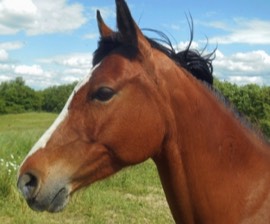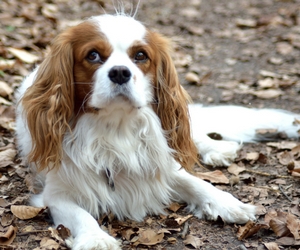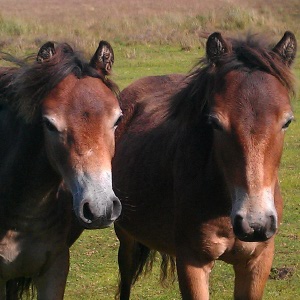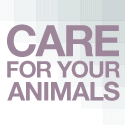Increase Your Knowledge of Veterinary Care Research
History of Veterinary Medicine
According to the Royal College of Veterinary Surgeons, the history of veterinary medicine goes back to 3000BC. So having specialists to care and treat animals isn't a modern phenomenon. But it wasn't until the 1700's that the first veterinary medicine schools were established permanently. And in the 1840's the Royal College of Veterinary Surgeons was established and the first registers of members created. So in the scheme of things, not that long ago.
You maybe surprised that the majority of vets in the earlier days of the veterinary profession only treated horses. This is because horses were really important to communities and societies as a whole. Horse power was how people survived and thrived, in the days before mechanisation and cars. So having veterinary surgeons to look after precious horses was vital. Advances in professional veterinary care for small animals didn't really happen until the 1930's, when the use of horses by communities declined. [Note - in many countries the equine (whether horse, donkey or mule) is still an animal vital to helping people work and live].
Over the last 60 years or so, there have been significant advances in medicine for both people and animals, and the 'pharmaceutical industry' has become a large and thriving sector. The "One Medicine" approach advocates the link between humans and animals. And how few illnesses affect only one group. This has been considered for many years:
“Between animal and human medicine there is no dividing line—nor should there be. The object is different but the experience obtained constitutes the basis of all medicine.” Rudolf Virchow (1821–1902) Read more with this book "Critical Needs for Research in Veterinary Science (2005).
It's both interesting and of note that many pharmaceutical drugs are in fact synthetic versions of herbal medicine. E.g. Asprin is derived from the Willow tree.
So what does this mean? Well veterinary science is continually developing, particularly in the sphere of small animal medicine. Generally, research into medicine for both people and animals has increased over the past few decades. But there's still a lot that we don't know (and perhaps never will 100%?).
It's important to consider whether a therapy or treatment is an "alternative" or is instead "complementary". Complementary means it will be used alongside other treatments, whereas alternative means that it is instead of. Given the complexities of the human and animal bodies, it makes sense to consider any treatments as being complementary and no one medicine or therapy is likely to be the only solution. What works for one person or animal may not (or will work) for another.
As ever, it's essential that rather than relying on internet research or the opinions of friends, family or colleagues, that you get professional Veterinary advice to diagnose and decide on the best treatment for your animal. There are an enormous number of Veterinary Surgeons who specialise in many aspects of holistic therapies too throughout the world.
What Research Is There To Prove Complementary Therapies Work for Animals?
Below you can find a list of links to veterinary research that maybe of interest to you. Or someone else you know who’s interested in animal health. So please share!


Horses - Natural Health Research
Acupuncture
Response to acupuncture treatment in horses with chronic laminitis (The Canadian Veterinary Journal, 2017)
Aloe Vera
Aloe Vera Extracts in Equine Clinical Practice (Veterinary Practice, 1996`)
Comparison of aloe vera and omeprazole in the treatment of equine gastric ulcer syndrome (Equine Veterinary Journal, 2017)
Aromatherapy
Effect of Aromatherapy on Equine Heart Rate Variability (Journal of Equine Veterinary Science, 2018)
Essential oils in the management of the donkey louse, Bovicola ocellatus (Equine Veterinary Journal, 2015)
Bees - Honey
Honey with high Unique Manuka Factor heals wounds (University of Sydney, 2017)
Bee - Pollen
Bee Pollen Supplementation to Aged Horses Influences Several Blood Parameters (Journal of Equine Veterinary Science, 2020)
Bees - Propolis
Evaluation of the Effectiveness of Propolis Compared with Honey on Second Intention Wound Healing in the Equine (Alexandria University, 2013)
CBD
Treatment using cannabidiol in a horse with mechanical allodynia (K.L. Ellis and E.K. Contino, 2019, BEVA)
The effects of pelleted cannabidiol supplementation on heart rate and reaction scores in horses (Journal of Veterinary Behaviour, 2021)
Effects of Cannabidiol on the In Vitro Lymphocyte Pro-Inflammatory Cytokine Production of Senior Horses (Journal of Equine Veterinary Science, 2021)
Chiropractic
The effects of chiropractic treatment on the range of motion of the carpus and tarsus of horses (Published in Advances in Animal Biosciences Vol 5 (1) March 2014; EVJ supplement , June 2014)
Cryotherapy
Equine laminitis model: Cryotherapy reduces the severity of lesions evaluated seven days after induction with oligofructose A.W. Van Eps and C.C. Pollitt; Australian Equine Laminitis Research Unit, University of Queensland; 2009
Electroacupunture
Electroacupuncture as an additional treatment for headshaking in six horses (Equine Veterinary Education, 2017)
Electrotherapy
Functional Electrical Stimulation as a Safe and Effective Treatment for Equine Epaxial Muscle Spasms: Clinical Evaluations and Histochemical Morphometry of Mitochondria in Muscle Biopsies (European Journal of Translational Myology. 2015)
Gene Therapy
Gene Therapy Using Plasmid DNA Encoding Vascular Endothelial Growth Factor 164 and Fibroblast Growth Factor 2 Genes for the Treatment of Horse Tendinitis and Desmitis: Case Reports (University of Nottingham and Kazan Federal University, Moscow State Academy, 2017)
Herb - Devil's Claw
Pharmacokinetics of harpagoside in horses after intragastric administration of a Devil's claw (Harpagophytum procumbens) - (Axmann - 2019 - Journal of Veterinary Pharmacology and Therapeutics - Wiley Online Library)
Herb - Milk Thistle
Milk Thistle and Its Derivative Compounds: A Review of Opportunities for Treatment of Liver Disease Journal of Veterinary Internal Medicine (2012)
Herb - Seabuckthorn
Effect of Sea Buckthorn Berries and Pulp in a Liquid Emulsion on Gastric Ulcer Scores and Gastric Juice pH in Horses (Veterinary Internal Medicine, 2012)
Herb - Sunflower
Effects of Topical Application of Sunflower-Seed Oil on Experimentally Induced Wounds in Horses (Journal of Equine Veterinary Science, 2012)
Hydrotherapy
How swimming affects plasma insulin and glucose concentration in Thoroughbreds: A pilot study. (University of Pisa, 2017)
Osteoarthritis - Review of the role of aquatic therapy in managing equine osteoarthritis (Colorado State University, 2016)
Vertical Displacement of the Equine Pelvis When Trotting on an Aqua Treadmill (Equine Veterinary Journal, 2014)
Workload of horses on a water treadmill: effect of speed and water height on oxygen consumption and cardiorespiratory parameters (BMC Veterinary Research. 2017;13:360. doi:10.1186/s12917-017-1290-2)
Response of twenty-seven horses with lower leg injuries to cold spa bath hydrotherapy (Journal of Equine Veterinary Science, 2001; https://doi.org/10.1016/S0737-0806(01)70121-9)
The use of treadmills within the rehabilitation of horses (Journal of Equine Veterinary Science, 2017)
Conditioning equine athletes on water treadmills significantly improves peak oxygen consumption (BMJ Veterinary Record, 2020)
Laser Therapy
An investigation into the depth of penetration of low level laser therapy through the equine tendon in vivo (Irish Veterinary Journal, 2007)
PENS Therapy
Headshaking - PENS treatment (University of Bristol, 2015)
Thermography
Orthopedics - Effectiveness of Thermography (Journal of Equine Veterinary Science, 2013)
Thermographic assessment of racing thoroughbreds (2001)
A Systematic Approach to Comparing Thermal Activity of the Thoracic Region and Saddle Pressure Distribution beneath the Saddle in a Group of Non-Lame Sports Horses (20210
Training
Local Back Pressure Caused by a Training Roller During Lunging With and Without a Pessoa Training Aid (Journal of Equine Veterinary Science, 2018) https://doi.org/10.1016/j.jevs.2018.03.018
Ultrasound
Muscle and Tendon Heating Rates with Therapeutic Ultrasound in Horses (University of Tennessee Equine Medical Centre, 2013)
Dogs - Natural Health Research
Aloe Vera
Comparison of Aloe Vera and Silver Sulfadiazine in the Treatment of Deep Second-Degree Burn in Dogs (2014)
Use of Aloe Vera in decreased clinical signs of canine distemper (1998)
Aromatherapy
Aromatherapy for travel-induced excitement in dogs (2006)
Bee Propolis
Effect of Propolis on Experimental Cutaneous Wound Healing in Dogs (2015)
Canine Bowen Therapy
Animal Bowen (the Bowen technique adapted for animals): use of a gentle hands-on therapy for chronic musculoskeletal pain in dogs (Veterinary Anaesthesia and Analgesia, 2005)
Glucosamine
Glucosamine and chondroitin use in canines for osteoarthritis: A review (University of Alberta and University of Manitoba, 2017)
Herb - Basil
Hypoglycemic efficacy of Rosmarinus officinalis and/or Ocimum basilicum leaves powder as a promising clinico-nutritional management tool for diabetes mellitus in Rottweiler dogs (Veterinary World, 2020)
Herb - Calendula
Medicinal plants as therapeutic options for topical treatment in canine dermatology? A systematic review (BMC Veterinary Research, 2019)
Herb - Cranberry
Urinary tract infections - effect of cranberry extract (American Journal of Veterinary Research, 2016)
Herb - Hawthorn
Fu, Jh., Zheng, Yq., Li, P. et al. Hawthorn leaves flavonoids decreases inflammation related to acute myocardial ischemia/reperfusion in anesthetized dogs. Chin. J. Integr. Med. 19, 582–588 (2013). https://doi.org/10.1007/s11655-012-1250-4
Herb - Seabuckthorn
Efficacy of Seabuckthorn (Hippophae rhamnoides) Oil vis-a-vis Other Standard Drugs for Management of Gastric Ulceration and Erosions in Dogs (Veterinary Medicine International, 2013)
Herb - Slippery Elm
Expedited Management of Canine and Feline Vomiting and Diarrhea. Observational Study in 3952 Dogs and 2248 Cats Using Sucralfate-Like Potency-Enhanced Polyanionic Phyto-Saccharide—Elm Mucilage (Open Journal of Veterinary Medicine, 2013)
Herb - Turmeric
Treatment for canine ocular condition using turmeric (Texas A&M University, 2020)
Homeopathy
Homeopathy for atopic dermatitis in dogs (British Homeopathic Association, 2009)
Homeopathic prescribing for chronic conditions in feline and canine veterinary practice (Journal of the Faculty of Homeopathy, 2010)
Hydrotherapy
Effect of Swimming on Clinical Functional Parameters and Serum Biomarkers in Healthy and Osteoarthritic Dogs (ISRN Veterinary Science, 2014)
Immunotherapy
Immunotherapy for cancer treatment (Veterinärmedizinische Universität Wien, 2014)
Physiotherapy
Evidence for the use of post-operative physiotherapy after surgical repair of the cranial cruciate ligament in dogs (The Veterinary Nurse, 2014)
Rehabilitation Therapy
Supraspinatus Tendinopathy in 327 Dogs: A Retrospective Study (2016)
Thermography
To help evaluate limbs (Veterinary Medicine, 2008)
Ultrasound
Treatment of solid tumors in dogs using veterinary high-intensity focused ultrasound: A retrospective clinical study (The Veterinary Journal, 2018)
Cats - Natural Health Research
Can aromatherapy be used to reduce anxiety in hospitalised felines (2018)
Pigs - Natural Health Research
Homeopathy as replacement to antibiotics in the case of Escherichia coli diarrhoea in neonatal piglets. Homeopathy, 99: 57–62. (2010)
Wild Animals - Natural Health Research
Infra red thermal imaging in studies of wild animals (2012)
Other Useful Holistic Health Research / All Animals
Benefits of Aloe vera in dentistry; Journal of Pharmacy & Bioallied Sciences. 2015;7(Suppl 1):S255-S259. doi:10.4103/0975-7406.155943.
A Critical Analysis of Chromotherapy and Its Scientific Evolution Evidence-based Complementary and Alternative Medicine. 2005;2(4):481-488. doi:10.1093/ecam/neh137.
Veterinary applications of pulsed electromagnetic field therapy; Research in Veterinary Science (2018)
Minimising Stress for Patients in the Veterinary Hospital: Why It Is Important and What Can Be Done about It (Veterinary Sciences 2017)
Reiki Is Better Than Placebo and Has Broad Potential as a Complementary Health Therapy (Journal of Evidence Based Complementary Alternative Medicine 2017)
Phytochemical characterization and evaluation of anticataract potential of seabuckthorn leaf extract. Suchita Dubey, Prakash Deep, Amrit K. Singh (2015). https://onlinelibrary.wiley.com/doi/abs/10.1111/vop.12271
Ethnoveterinary medicines used for ruminants in British Columbia, Canada (2007). Journal of Ethnobiology and Ethnomedicine
- Check out Taranet's blog here!
- If you'd like to start your own animal care business, take a look at this e-book from Taranet's Director, Suzanne
- Are you not sure what options there are for working with animals? Have a look at our special slideshow here over on our youtube channel for some ideas!
- Do email info @ taranet . co. uk if you've any questions

